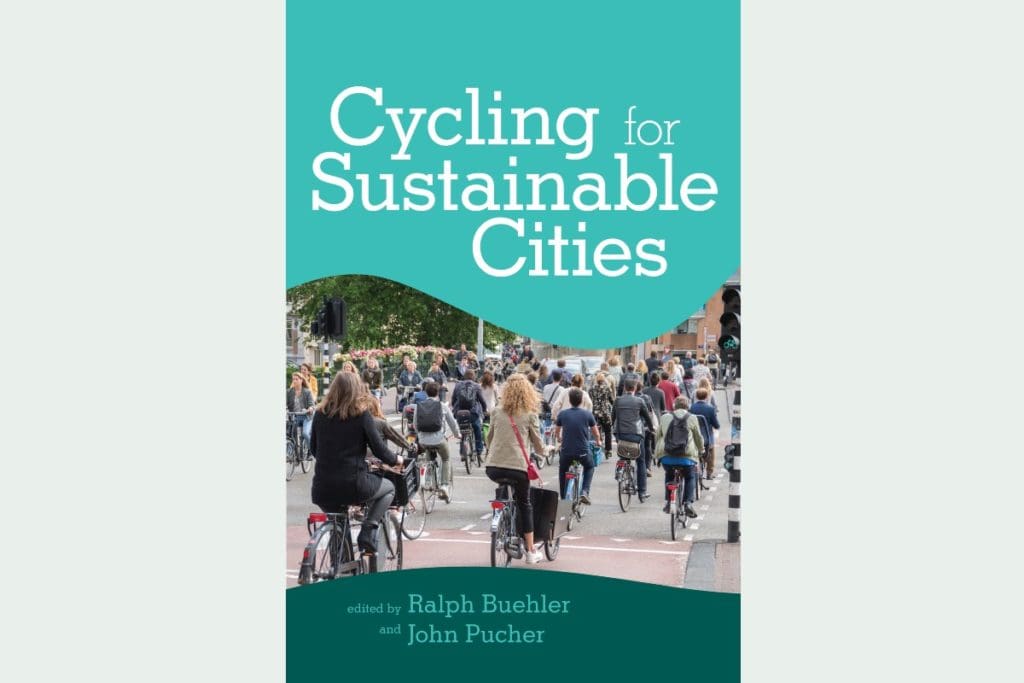Book Review: Cycling for Sustainable Cities

Cambridge / Massachusetts / USA
Ralph Buehler and John Pucher are two highly regarded and widely published American academics who in 2012 published what was in many ways a ground-breaking book, City Cycling. It has taken them almost a decade, but in early 2021 they’ve published their follow up – Cycling for Sustainable Cities.
This is more than just a second edition. As well as having quite a few new and varied chapters, so much has happened in urban cycling over the space of the most recent decade that the content is quite different.
However, there are similarities. In both cases, these books are edited by the lead authors but draw on a wide range of contributors.
Cycling for Sustainable Cities also has a strong Australian connection. Co-Author John Pucher spent a year working at the University of Sydney in the mid 2000’s. Of the 43 Contributors, seven are Australian:
- Adrian Bauman, School of Public Health, University of Sydney
- Peter Bourke, Executive Director, We Ride Australia
- Fiona Campbell, Manager of Cycling Strategy, City of Sydney
- Elliot Fishman, Director, Institute of Sensible Transport, Melbourne
- Jan Garrard, School of Health and Social Development, Deakin University, Melbourne
- Billie Giles-Corti, Centre for Urban Research, RMIT, Melbourne
- Chris Rissel, School of Public Health, University of Sydney
Therefore it’s not surprising that throughout the book there are plenty of mentions of Australia and the cycling situation here.
However, Cycling for Sustainable Cities is a USA-centric book, with in addition to the two lead authors, 19 of the 43 contributors living in the USA.
Next after Australia’s seven contributors are three each from the Netherlands and Canada, two from the UK and one each from Belgium, China, Colombia, France, India, Japan, Norway and Spain.
It’s a pity the book could not have a more international perspective, with hardly a mention and no contributors from Africa or South East Asia and minimal coverage of eastern Europe, or the Middle East. In defence of the authors, they make no claims to their book painting a global picture.
A new chapter looking at cycling in the world’s two most popular nations, China and India, is a welcome and addition since the first book with many insights that most readers will not have previously known.
Other key chapters cover cycling as it relates to health, safety, infrastructure for all, parking, promotion, ebikes, bikeshare, women, children, older people, social justice and finally a range of summaries for various countries and cities.
All of this is packed into a larger than standard page-sized 480 page package. There are plenty of charts and data to keep researchers happy and provide ammunition for cycling advocates.
My only real complaint, which I know is a personal paranoia due to my upbringing in an academic family, for which I really should seek therapy, is why does this book have to be presented in such a dry… dry as sawdust… academic format?
It’s also fairly expensive, as is common with academic books, at around $60 depending upon supplier and shipping options.
There would certainly be scope for a non-academic version with bigger graphics and photos, in colour instead of black and white, written in a more lively, less formal style, with some anecdotes and personal stories to break up all the information-dense data.
Personal gripes aside, Cycling for Sustainable Cities is essential reading for anyone working in transport planning, urban design, or related fields or with a strong interest in cycling advocacy.
